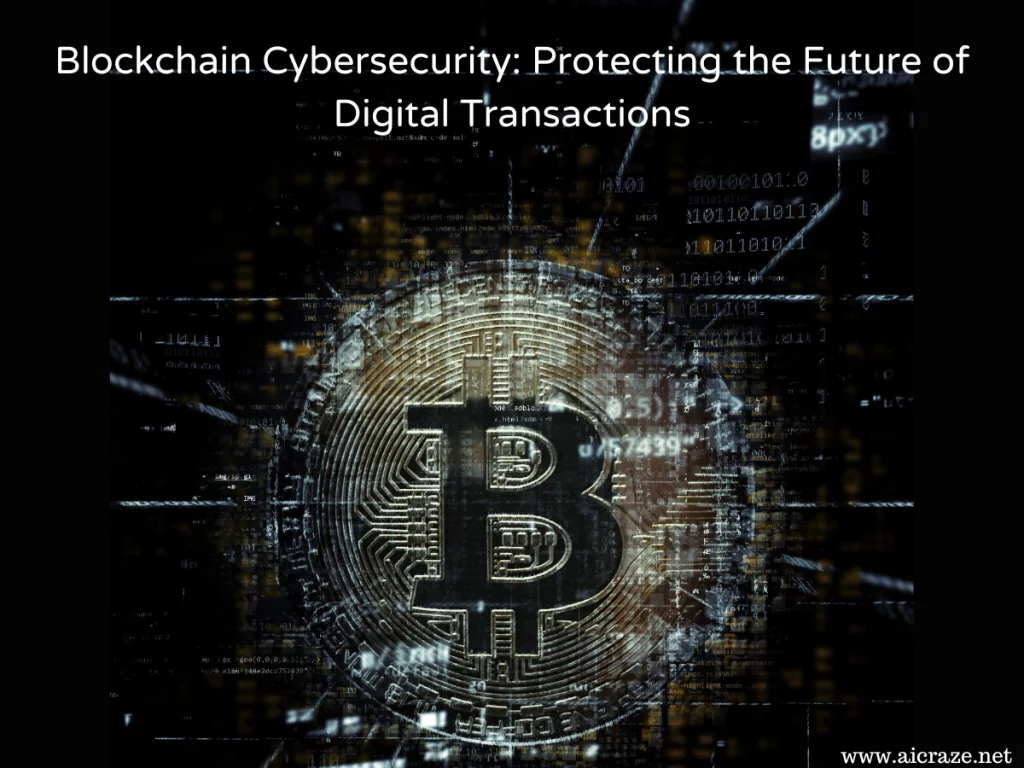
Blockchain technology, which forms the foundation of cryptocurrencies like Bitcoin, has gained widespread attention due to its decentralized and transparent nature. However, like any other technology, blockchain is not immune to security risks. Cybersecurity plays a crucial role in ensuring the integrity, confidentiality, and availability of data in blockchain networks. In this article, we will delve into the intricacies of blockchain cybersecurity, exploring the vulnerabilities, best practices, emerging trends, challenges, and future outlook.
The Importance of Cybersecurity in Blockchain
Despite its inherent security features, blockchain is not impervious to cyber threats. Various vulnerabilities can be exploited by malicious actors to compromise the integrity and confidentiality of data stored in a blockchain network.
Vulnerabilities in Blockchain
There are a couple of vulnerabilities in blockchain technology. One is the “51% attack”, where someone gains control of over 50% of the network’s computational power and can manipulate transactions. Another is the “double spending” attack, where an attacker spends the same digital asset multiple times. Smart contracts, which are contracts written in code and automatically executed, can also have security flaws.
Cybersecurity Measures for Blockchain
To safeguard blockchain networks, robust cybersecurity measures must be implemented. Encryption, which uses cryptographic techniques to secure data, plays a crucial role in ensuring the confidentiality and integrity of data in a blockchain. Access control mechanisms, such as public and private keys, can authenticate users and prevent unauthorized access. Regular audits of smart contracts can help identify and fix vulnerabilities. Additionally, network participants must follow best practices, such as keeping their software updated and using strong authentication methods.
Best Practices for Blockchain Cybersecurity
Implementing best practices can enhance blockchain cybersecurity. Here are some key best practices:
- Securing Private Keys
Private keys are critical for accessing and managing digital assets in a blockchain. They must be stored securely to prevent unauthorized access. Hardware wallets, such as USB devices, provide an extra layer of security by keeping private keys offline and protected from online threats. Multi-signature wallets, which require multiple private keys to authorize transactions, can also enhance security.
- Implementing Multi-Factor Authentication
Multi-factor authentication (MFA) is a security feature that requires users to provide multiple forms of identification when accessing a blockchain network. This can include a password (something they know), a mobile device (something they have), and biometric data (something they are). MFA adds an extra layer of protection, making it more difficult for unauthorized individuals to access the blockchain network.
- Regular Software Updates
Blockchain technology is constantly evolving, and software updates often contain critical security patches. Regularly updating the blockchain software can ensure that known vulnerabilities are addressed promptly. Network participants should also keep their wallets, clients, and other relevant software up-to-date to protect against potential security risks.
- Conducting Penetration Testing
Penetration testing, also known as ethical hacking, involves simulating real-world cyber attacks to identify vulnerabilities in a blockchain network. By identifying and fixing vulnerabilities proactively, penetration testing can help prevent potential cyber-attacks. Regular penetration testing can provide valuable insights into the security posture of a blockchain network and help improve blockchain cybersecurity.
- Training Employees on Cybersecurity
Human error is a significant factor in cybersecurity breaches. Educating employees about cybersecurity best practices, such as identifying and avoiding phishing attacks, using strong passwords, and being cautious with sharing sensitive information, can help prevent security incidents. Training employees on the importance of cybersecurity in the context of blockchain networks can minimize risks.
Emerging Trends in Blockchain Cybersecurity
As blockchain technology continues to evolve, new trends are emerging to enhance blockchain cybersecurity.
- Use of Artificial Intelligence for Threat Detection
Artificial Intelligence (AI) can be used to quickly detect and respond to cyber threats in real time. AI-powered systems can analyze lots of data to find patterns and unusual behavior that could signal a security breach. These systems can learn and get better over time, making their threat detection more accurate.
- Quantum Computing and Its Impact on Blockchain Security
Quantum computing is a fast-evolving technology that could potentially break the cryptographic algorithms used in many blockchain networks. This poses a significant security risk to current blockchain systems. To address this threat, researchers are working on developing cryptographic algorithms that are resistant to attacks from quantum computers.
- Decentralized Identity Management
Identity management is a critical aspect of cybersecurity in any network, including blockchains. Decentralized identity management allows users to have control over their personal data and how it is used. Blockchain-based identity management systems can provide enhanced security, privacy, and user control, reducing the risks associated with traditional centralized identity management systems.
- Zero-Trust Security Framework for Blockchain
Zero-Trust security is an approach that assumes that no user or system should be trusted by default, and all access requests should be verified and authorized. Implementing a Zero-Trust security framework in blockchain networks can help prevent unauthorized access, reduce the attack surface, and improve overall security.
Challenges and Future Outlook
While blockchain technology has the potential to revolutionize various industries, including cybersecurity, there are challenges that we should address. One significant challenge is the lack of standardization in blockchain security practices, which can lead to inconsistent implementation and potential vulnerabilities. Additionally, the rapid evolution of blockchain technology and the constantly evolving threat landscape require continuous efforts to stay ahead of cyber security risks.
Despite these challenges, the future outlook for blockchain cybersecurity is promising. As technology advances, there will be an increased focus on developing standardized best practices for securing blockchain networks. Integration of emerging technologies like artificial intelligence and quantum-resistant cryptography will further enhance the security of blockchain networks. Additionally, regulatory bodies and industry organizations are increasingly recognizing the importance of cybersecurity in blockchain and are taking steps to establish guidelines and standards.
Conclusion
In conclusion, blockchain technology offers significant potential for transforming various industries, but it also presents unique cybersecurity challenges. To ensure the security and integrity of blockchain networks, it is crucial to implement best practices such as securing private keys, implementing multi-factor authentication, conducting regular software updates, and providing employee training. Moreover, keeping up with emerging trends and technologies in blockchain cybersecurity, such as the use of artificial intelligence, decentralized identity management, and zero-trust security, can further strengthen the security posture of blockchain networks. By addressing challenges, following best practices, and staying vigilant in the face of evolving threats, the future of blockchain cybersecurity looks promising.
FAQs
Can blockchain networks be hacked?
While blockchain networks are secure, no system is completely immune to hacking. Implementing best practices and staying updated with the latest security measures can minimize the risk of hacks.
How important is securing private keys in blockchain networks?
A: Securing private keys is crucial in blockchain networks, as they provide access to digital assets. Storing private keys securely, such as using hardware wallets, is essential to prevent unauthorized access.
What is multi-factor authentication (MFA) in the context of blockchain cybersecurity?
Multi-factor authentication (MFA) is an added security measure that requires users to provide multiple forms of identification when accessing a blockchain network. This can include information they know, such as a password; something they have, like a mobile device; and something they are, like biometric data. MFA provides an additional layer of protection to the blockchain network, enhancing its security against unauthorized access.
How can artificial intelligence enhance blockchain cybersecurity?
We can use Artificial intelligence for real-time threat detection, analyzing large volumes of data to identify patterns and anomalies. Machine learning algorithms can continuously improve threat detection accuracy, enhancing the security of blockchain networks.
What are the challenges in blockchain cybersecurity?
Challenges in blockchain cybersecurity include the lack of standardization in security practices, the rapid evolution of technology, and the constantly changing threat landscape. Addressing these challenges requires continuous efforts and vigilance.

